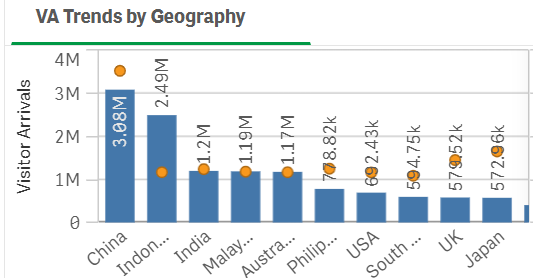ASSESSMENT TASK 3
| SUBJECT CODE | BX2091 | ||||||||
| STUDENT FAMILY NAME | Student Given Name | JCU Student Number | |||||||
| ASSESSMENT TITLE | ASSESSMENT TASK 3 – RESEARCH WORKBOOK | ||||||||
| DUE DATE | 28th November 2026 | ||||||||
| LECTURER NAME | Robert Chan | ||||||||
| TUTOR NAME | Robert Chan | ||||||||
cta_question_1
Research Workbook (50%)
Research and answer ALL questions
Note:
- To evidence your research, in text citation and references (APA style) are required. References should be placed at the end of each question.
- Insert your answers in the space provided for each question.
- References are not included in the word count of each question.
QUESTIONS
Q1. The Tourism System (15%)
1.1 Describe the extent to which Singapore functions simultaneously as an origin region, transit region and destination region. (5%, 100 words). (SLO1, SLO2 &CLO1)
1.2 Discuss the potential synergies and conflicts that emerge from each of the three
region combinations (e.g. origin/transit, origin/destination, transit/destination). (5%, 100 words). (SLO2, SLO3 & CLO3)
1.3 Define your most recent experience as a tourist, in terms of which of the four
categories in Figure 1 below it falls under, and also which purpose or purposes as
discussed in topic of purposive component of the tourist (e.g. leisure, VFR, business, sport, spiritual & health, education, others). (5%, 100 words). (SLO1 & CLO1)

Q2. Tourism Demand (20%)
2.1 Rank the following ten destination countries beginning with the one that you would most like to visit for a one-month vacation, and ending with the one that
you would be least interested in visiting for a one-month vacation. (3%). (SLO2 & CLO1).
Zimbabwe Fiji Mexico China United States France Dubai India United Kingdom Russia
2.2 Indicate the reasons for your rankings, referring in each case to each of the pull
factors discussed in class. (6%, 150 words). (SLO2 & CLO3)
2.3 Figures 2 and 3 below show the top tourist arrivals to Singapore in 2014 and 2024 respectively. Describe the differences between the two years, listing the factors that could possibly explain the differences. (6%, 150 words). (SLO1, SLO2 & CLO6)

Figure 2 (2014 visitor arrivals to Singapore)

Figure 3 (2024 visitor arrivals to Singapore)
2.4 Predict what the pattern might look like in 2030. (5%,100 words). (SLO4 &
CLO6)
Q3. Tourism and Leisure Sustainability (20%)
3.1 Speculate on the likely positive socio-cultural, economic and environmental impacts associated with sex tourism (for example, in Bangkok’s red-light district).
(10%, 200 words). (SLO2, SLO3, CLO1 & CLO2)
3.2 Consider the likely negative socio-cultural, economic and environmental impacts
associated with volunteer tourism (for example, a scenario involving a volunteer organization with a humanitarian focus). (10%, 200 words). (SLO3 & CLO6)
Q4. Tourism and Leisure Marketing (25%)
4.1 Conduct a SWOT analysis of a particular destination. Each of the four destinations should be located adjacent to one another either at the international scale (e.g. Singapore, Malaysia, Indonesia and Thailand) or at the subnational scale (e.g. Melaka, Kuala Lumpur, Genting Highlands, Kuantan). (14%, 250 words). (SLO2, SLO4 & CLO3)
4.2 Show how the other three destinations fit into the SWOT analysis of each destination (6%, 150 words). (SLO2, SLO4 & CLO3)
4.3 Indicate ways in which the competition-related threats of these other destinations can be converted into opportunities. (5%, 100 words). (SLO2, SLO4 & CLO6)
Q5. Tourism Demand (20%)
5.1 Select a mature destination. Identify the measures taken by the destination managers and communities to rejuvenate the destination. (10%, 200 words). (SLO2, SLO4 &
CLO3)
5.2 Show how these measures are innovative with respect to, for example, organization, collaboration, technology, product development, marketing and/or management. (10%,200 words). (SLO2 &CLO1)
END
cta_question_2
The post BX2091 Tourism & Leisure Management Assessment 3 Research Workbook 2026 | JCU appeared first on My Assignment Help SG.